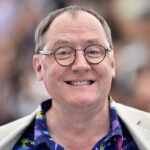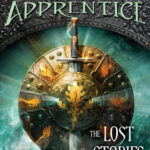John Hopfield, a distinguished professor emeritus at Princeton University, has been awarded the 2024 Nobel Prize in Physics, sharing the honor with Geoffrey E. Hinton of the University of Toronto. This prestigious award recognizes their groundbreaking “foundational discoveries and inventions that enable machine learning with artificial neural networks,” marking a pivotal moment for the field and highlighting the profound impact of John Hopfield‘s work.
The Royal Swedish Academy of Sciences lauded John Hopfield and Geoffrey Hinton for harnessing “tools from physics to develop methods that are the foundation of today’s powerful machine learning.” This acknowledgment underscores the interdisciplinary nature of modern scientific advancement, where physics principles are instrumental in shaping cutting-edge technologies like artificial neural networks.
Professor John Hopfield, recipient of the 2024 Nobel Prize in Physics for his pioneering work on neural networks and associative memory.
John Hopfield‘s specific contribution, as highlighted by the academy, is the creation of an “associative memory that can store and reconstruct images and other types of patterns in data.” This concept, known as the Hopfield network, revolutionized the field by providing a framework for machines to learn and recall information in a way that mimics the human brain’s associative memory. Simultaneously, Geoffrey Hinton’s invention of a method for autonomous data property identification complements John Hopfield‘s work, together forming the bedrock of contemporary machine learning.
News of the Nobel Prize reached John Hopfield while he was in England. He expressed his astonishment and gratitude upon receiving a flood of congratulatory messages. John Hopfield emphasized the crucial link between basic scientific research, driven by curiosity, and the technological innovations that transform society. He stated, “The science which advances technology is the science that gets done for curiosity’s sake much earlier.” This perspective underscores the long-term value of fundamental research, even when immediate applications are not apparent.
John Hopfield‘s illustrious career at Princeton spans several decades, holding positions as the Howard A. Prior Professor in the Life Sciences, Emeritus, and professor of molecular biology, emeritus. He also maintains associated faculty status in physics and neuroscience, reflecting his interdisciplinary expertise. Notably, John Hopfield dedicated 16 years as a professor of physics at Princeton and was instrumental in establishing the Princeton Neuroscience Institute, further solidifying his legacy at the university.
Princeton University President Christopher L. Eisgruber celebrated John Hopfield’s achievement, stating, “John Hopfield’s brilliant scientific career has transcended ordinary disciplinary boundaries, enabling him to make lasting contributions to physics, chemistry, neuroscience, and molecular biology.” Eisgruber emphasized that John Hopfield‘s Nobel-recognized research on neural networks exemplifies the power of curiosity-driven research to expand knowledge and develop tools for addressing global challenges.
A Pioneer in Neuroscience and Neural Networks: The Legacy of John Hopfield
Mala Murthy, the current director of the Princeton Neuroscience Institute, acknowledged John Hopfield as a “foundational figure in neuroscience at Princeton.” She explained that “Hopfield networks are inspired by the brain and enable machines to store memories and recall them with only partial information.” This groundbreaking work, stemming from John Hopfield‘s insights, laid the groundwork for the deep learning revolution that now permeates nearly every facet of modern life.
Bonnie Bassler, chair of Princeton’s Department of Molecular Biology, echoed this sentiment, praising John Hopfield‘s discoveries for demonstrating how interdisciplinary research can revolutionize our understanding of nature and yield practical societal benefits. She highlighted John Hopfield‘s unique combination of physics, biology, and neuroscience approaches in developing neural networks to model brain memory recall. These discoveries, rooted in John Hopfield‘s pioneering thinking, have led to the artificial neural networks powering smartphones and self-driving cars, fundamentally changing the technological landscape.
James Olsen, chair of the Department of Physics, described John Hopfield as a “visionary scientist” who bridged theoretical physics with diverse scientific phenomena. He recalled John Hopfield‘s impactful teaching and mentorship within the physics department during the 1960s and 70s, inspiring generations of students with his brilliance and unique approach to scientific inquiry.
Former Nobel laureate David MacMillan offered congratulations, recognizing John Hopfield‘s remarkable achievement and its lasting benefit to humankind.
Princeton University President Christopher L. Eisgruber and Mala Murthy at a press conference honoring Nobel laureate John Hopfield, emphasizing the importance of fundamental research.
Celebrating Curiosity and Interdisciplinary Science: John Hopfield’s Nobel Journey
At a campus press conference, John Hopfield elaborated on his science and its impact, met with enthusiastic applause. President Eisgruber emphasized the global significance of the Nobel Prizes in recognizing fundamental research and scholarship, aligning with Princeton’s tradition of celebrating such achievements. He further highlighted John Hopfield‘s embodiment of Princeton’s commitment to curiosity-driven learning as a means to address pressing global challenges.
John Hopfield, joining remotely, reflected on the era when disciplinary boundaries were rigid in science. He recounted how conventional wisdom discouraged venturing outside one’s field. However, John Hopfield defied this advice, forging an interdisciplinary career path. He advocated for universities to support “blue-sky research,” acknowledging the inherent risks but also the potential for significant breakthroughs arising from unexplored scientific territories.
Responding to questions, John Hopfield challenged the definition of physics itself, drawing applause for his perspective on the evolving nature of scientific disciplines. He also addressed the ethical considerations surrounding artificial intelligence, drawing parallels to the early days of gene editing, emphasizing the need for responsible development and ethical guidelines in the rapidly advancing field shaped by his foundational work.
The Science Behind the Prize: Hopfield Networks and Memory
David Tank, Princeton’s Henry L. Hillman Professor of Neuroscience, hailed John Hopfield as a “founding father of the field of artificial neural networks,” highlighting the biological inspiration behind his work. John Hopfield‘s seminal papers in the early 1980s, cited tens of thousands of times, connected the physics concept of “dynamical attractors” to human memory. John Hopfield‘s genius lay in recognizing that human memory also operates through “attractors” in the brain.
Sebastian Seung, the Anthony B. Evnin Professor in the Princeton Neuroscience Institute and the Department of Computer Science, explained how John Hopfield reconceptualized memory storage and retrieval using mathematics and dynamical systems theory. This led to recurrent neural networks, known as Hopfield networks, which are fundamental to modern AI. Tank further elaborated that recurrent neural networks, stemming from John Hopfield‘s research, are now integral to systems neuroscience, including the “ring attractor” concept in fly connectome research. Modern AI systems often blend recurrent systems with deep learning and backpropagation, the latter developed by Geoffrey Hinton, John Hopfield‘s Nobel co-laureate.
A Polymath’s Path: John Hopfield’s Interdisciplinary Journey
John Hopfield‘s career exemplifies interdisciplinary excellence, with groundbreaking contributions across physics, neuroscience, biophysics, molecular biology, and chemistry. Born into a family of physicists, John Hopfield‘s early life was steeped in scientific inquiry. His academic journey took him from Swarthmore College to a Ph.D. at Cornell, followed by positions at Bell Labs, École Normale Supérieure, and Berkeley, before joining Princeton in 1964. His diverse interests led him to NASA’s Tycho Study Group and to significant contributions to LED technology, earning him the Buckley Prize in 1969.
Princeton Physics Department faculty in 1974-75, including Nobel laureates John Hopfield, Jim Peebles, and Val Fitch, showcasing a legacy of scientific excellence.
Bill Bialek, the John Archibald Wheeler/Battelle Professor in Physics, emphasized John Hopfield‘s profound influence, inspiring many to engage with the “beautiful and sometimes mysterious phenomena of life” through a physics lens. In 1974, John Hopfield‘s “kinetic proofreading” paper made a major impact on chemistry, followed by influential work on electron transfer reactions, with the “Hopfield coefficient” becoming a recognized term.
In 1980, John Hopfield moved to Caltech to establish the first Computational and Neural Systems Program. During this time, he mentored Carlos Brody, now a neuroscience professor at Princeton. Brody recalls John Hopfield‘s exceptional mentorship, characterized by insightful questions that cut to the core of complex issues. John Hopfield‘s MacArthur “Genius” Award in 1983 further fueled his research.
Returning to Princeton in 1997, John Hopfield continued to build interdisciplinary bridges, recruiting colleagues like David Tank. Tank recounted John Hopfield‘s compelling vision for Princeton as a unique environment for building something new and impactful. Sebastian Seung described John Hopfield‘s remarkable ability to spark discovery in brief interactions, highlighting his exceptional intellectual presence. In 2001, John Hopfield received the Dirac Medal, recognizing his broad scientific contributions.
Mentorship and Lasting Impact: John Hopfield’s Princeton Legacy
Olga Troyanskaya, a prominent AI researcher at Princeton, recalled being inspired by John Hopfield‘s intellect during her faculty interview in 2003. She emphasized the pioneering nature of Hopfield networks, both computationally and in understanding biological systems. John Hopfield‘s collaborative spirit is further exemplified by his mentorship of Gayle Wittenberg and Sam Wang, where he characteristically prioritized his students’ recognition.
Gayle Wittenberg shared an anecdote illustrating John Hopfield‘s playful intellect and passion for problem-solving, even on his 66th birthday, highlighting his ability to find joy in understanding the world. Olly Downs, a former student, noted John Hopfield‘s humility, even referring to the widely known Hopfield Network simply as “associative networks” in his teaching.
John Hopfield‘s leadership extended to professional societies, serving as vice president and president of the American Physical Society in the mid-2000s. Even in retirement in 2008, as the Princeton Neuroscience Institute launched, John Hopfield‘s foundational influence remained central.
Sebastian Seung speaks at a reception celebrating John Hopfield’s Nobel Prize, emphasizing his profound impact on Princeton faculty and students across disciplines.
Celebrating a Mentor and Friend: The Nobel Reception
Following the press conference, a reception celebrated John Hopfield‘s Nobel Prize, with colleagues like Tank, Bialek, and Seung offering heartfelt remarks. David Tank credited John Hopfield as a key reason for his coming to Princeton. Bill Bialek described John Hopfield as both a scientific inspiration and a “warm and supportive human being.” Sebastian Seung underscored the profound questions about the universe that John Hopfield‘s discoveries have helped answer.
The reception buzzed with excitement, with students and faculty alike expressing inspiration and pride in being part of Princeton during this Nobel celebration. Postdoctoral researcher Luca Di Carlo noted the reassuring reminder of the impact of research, while graduate students Megan Matter and Christina Preston shared their excitement, recalling the previous Nobel celebration for David MacMillan. Undergraduate alumnus Cameron Khan felt fortunate to witness multiple Nobel celebrations at Princeton.
John Hopfield joins a distinguished list of Nobel laureates from Princeton faculty and alumni. The 2024 Nobel Prize amount of 11 million Swedish kronor will be shared between the laureates.
*Former students Gayle Wittenberg and Maria Geffen celebrate with their mentor, Nobel laureate John Hopfield, at a reception at the Princeton Neuroscience Institute.**Princeton President Christopher L. Eisgruber at the Nobel celebration, highlighting the university's pride in John Hopfield's curiosity-driven research and groundbreaking discovery.**John Hopfield receives a standing ovation from Princeton leaders, faculty, and students as he addresses the celebration of his Nobel Prize in Physics.**An overhead view of the enthusiastic crowd gathered at the Princeton Neuroscience Institute to honor John Hopfield and his Nobel Prize winning contributions to science.**Neuroscience graduate student Zijian Jiang takes a selfie with Nobel laureate John Hopfield during the celebratory reception at Princeton.**The Princeton Neuroscience Institute, a testament to John Hopfield's interdisciplinary vision, hosts the celebration of his Nobel Prize in Physics.**Graduate student Eva Xie obtains an autograph from John Hopfield on one of his seminal academic papers, spanning decades of scientific contribution.**Mala Murthy, Director of the Princeton Neuroscience Institute, speaks about John Hopfield's problem-solving approach and its revolutionary impact on technology.**Department chairs from Neuroscience, Physics, and Molecular Biology celebrate John Hopfield's Nobel Prize and his multidisciplinary impact on science at Princeton.**Nobel laureates John Hopfield and Jim Peebles, both long-time Princeton Physics faculty members, share a moment at the celebration event.**John Hopfield, accompanied by his wife Mary Waltham and Princeton Provost Jennifer Rexford, beams amidst applause at the Nobel Prize reception.**A large and enthusiastic audience listens to speakers celebrating John Hopfield's Nobel Prize, recognizing his contributions to science and Princeton University.**An ebullient John Hopfield engages with well-wishers at the reception, celebrating his Nobel Prize and his enduring impact on the scientific community.**Students gather to take a group photo with John Hopfield, celebrating his Nobel Prize and his profound influence across multiple academic communities at Princeton.*

